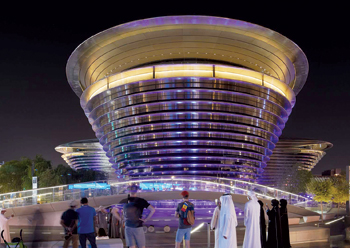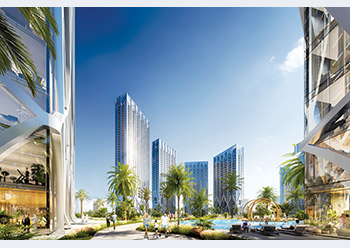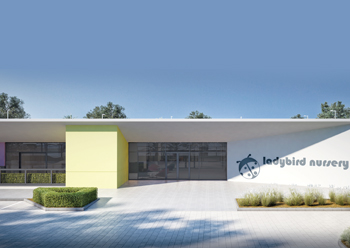
 Mobility Pavilion ... its highly reflective stainless-steel cladding was inspired by chrome fenders and aircraft wings.
Mobility Pavilion ... its highly reflective stainless-steel cladding was inspired by chrome fenders and aircraft wings.
With its highly reflective stainless-steel cladding reflecting movement from the surrounding areas and making the building seem alive and in motion, Alif – The Mobility Pavilion is poetry in motion to visitors approaching the magnificent edifice at the Expo 2020 Dubai site.
It is one of the Expo’s three signature pavilions based on the sub-themes of Mobility, Sustainability and Opportunity and welcomed its first visitors last month.
 |
|
|
Designed by Foster + Partners, The Mobility Pavilion has been a collaborative project in partnership with Expo 2020 Dubai addressing the overall theme of Connecting Minds and Creating the Future and providing a platform to foster creativity, innovation and collaboration globally.
Gerard Evenden, Head of Studio at Foster + Partners, says: “This is the third World Expo that we have been involved in, the two previous were in Shanghai and Milan. These events are incredible opportunities to showcase innovation from around the world. Similarly, Alif – The Mobility Pavilion conveys new ideas of mobility in a simple, yet thought-provoking and engaging manner, as we look towards the future of Dubai and the UAE in its aspirations, its technology and its investment.”
The 25-m-high Alif (named after the first letter of the Arabic alphabet and symbolising the beginning of progress and new horizons) occupies a 29,695-sq-m area in a dedicated plaza at the south entrance to the site. Its ribbed and curved shape was designed to evoke movement.
 |
|
Aerial view of Alif showinging the tri-foil plan. (Photo by Dany Eid/Expo 2020 Dubai) |
“Its highly reflective stainless-steel cladding was inspired by chrome fenders and aircraft wings. It reflects movement from the surrounding areas, making the building seem alive and in motion. The visible lines of the building’s layers hint at how we are all connected, even when physically far apart. An amphitheatre and a second stage, as well as a piazza surrounding the building, will host mobility-related performances, events, symposiums and demonstrations,” Evenden explains.
Internally, the display areas are divided into three key zones, each forming a petal in the tri-foil plan. Visitors enter directly into the central core, which features the world’s largest passenger lift, capable of holding more than 160 persons (38 for social distancing restrictions). This moving platform takes everyone up to the third level where they can then move down through successive interconnected galleries to the lower ground floor, viewing innovative, immersive and interactive visitor experiences focused on mobility, according to Foster + Partners.
“The design of the building and the exhibition have evolved together, right from the outset in close collaboration with the Expo team. The tri-foil plan of the building has developed around the creation of three volumes which will house a dedicated space for each of these sections. The exterior landscape of the building forms a platform for interactive shows and experiments that explore the notion of Mobility,” adds Evenden.
 |
|
Alif ... its ribbed and curved shape was designed to evoke movement. |
A partly underground, partly open-air 330-m track will allow visitors to see cutting-edge mobility devices in action, as well as witness mass-produced technology that has the opportunity to vastly improve the quality of life for people in developing countries, says the designer.
Sustainability was at the forefront of the design, and the Mobility Pavilion has been designed to LEED (Leadership in Energy and Environmental Design) Gold standard. It is a self-shading building, and its metal cladding reflects heat. Photovoltaic panels on the roof take advantage of solar energy and the landscape design is sensitive to water use.
The building houses larger-than-life, 9-m-tall historical giants of mobility whose innovations helped navigate the world and paved the way for the technology we use today.
These structures have been created by Academy Award-winning Los Angeles-based experience company Magnopus and physical manufacturing facility Weta Workshop.








.jpg)




.jpg)




























.jpg)


































